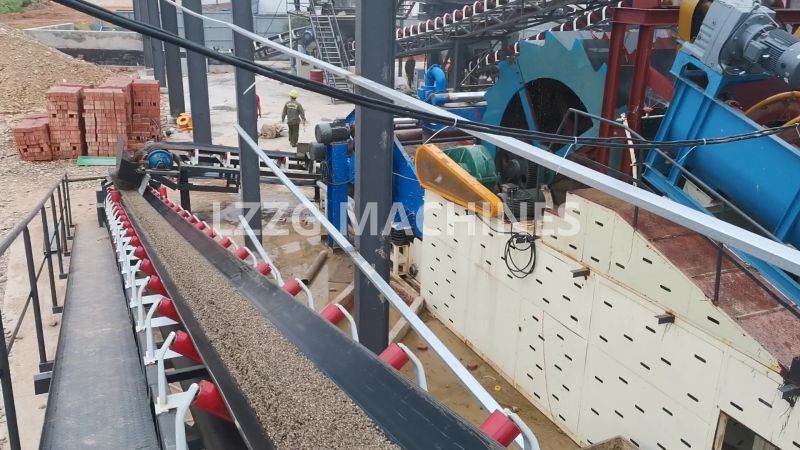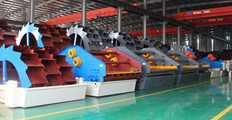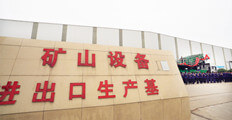How to adjust the deviation of the belt conveyor
If you are interested in our products, Please get in contact with us .
E-mail: export@lylzzg.com Chat Line Send InquiryBelt deviation is a very common fault when the belt conveyor is running. To solve such failures, attention should be paid to installation dimensional accuracy and routine maintenance. There are many reasons for the deviation, which need to be dealt with according to different reasons.

Belt conveyor belt deviation solution
1. Adjust the bearing roller group.
When the belt of the belt conveyor deviates in the middle of the entire belt conveyor, the position of the roller group can be adjusted to adjust the deviation; during the manufacturing process, the installation holes on both sides of the roller group are processed into long holes for adjustment.
2. Install the self-aligning idler set.
There are many types of self-aligning roller sets, such as intermediate shafts, four-bar linkages, vertical rollers, etc. The principle is to block or rotate the rollers in the horizontal plane or generate lateral thrust so that the belt can be automatically centripetal to achieve the purpose of adjusting the deviation of the belt. Generally speaking, this method is more reasonable when the overall length of the belt conveyor is short or when the belt conveyor is running in both directions because the short belt conveyor is easier to deviate and adjust. Try not to use this method for long belt conveyors, because the use of self-aligning rollers will have a certain impact on the service life of the belt.
3. Adjust the position of the drive roller and steering roller.
The adjustment of drive rollers and steering rollers is an important part of belt deviation adjustment. Since the belt conveyor has at least 2 to 5 rollers, the installation position of all the rollers must be perpendicular to the centerline of the length direction of the belt conveyor. If the deviation is too large, the deviation will inevitably occur. The adjustment method is similar to the adjustment roller set. For the head drum, if the belt is biased to the right side of the drum, the right bearing seat should move forward, the left bearing seat should move forward, the left bearing seat can also move backward or the right bearing seat can move backward. The adjustment method of the tail roller is exactly the opposite of that of the head roller. Repeat the adjustment until the belt is adjusted to the ideal position. Before adjusting the drive or steering drum, install it as accurately as possible.

4. Tension adjustment.
The adjustment of the belt tension is a very important part of the deviation adjustment of the belt conveyor. In addition to being perpendicular to the length of the belt, the two turning rollers on the upper part of the weight tension place should also be perpendicular to the vertical line of gravity, that is, to ensure that the centerline of the shaft is horizontal. When using screw tension or hydraulic cylinder tension, the two bearing blocks of the tension roller should be translated simultaneously to ensure that the roller axis is perpendicular to the longitudinal direction of the belt. The specific adjustment method of the belt deviation is similar to the adjustment of the drum.
5. The influence of the blanking position of the transfer point on the deviation of the belt.
The blanking position of the material at the transfer point has a great influence on the deviation of the belt, especially when the two belt conveyors are projected vertically on the horizontal plane. Generally, the relative height of the two belt conveyors above and below the transfer point should be considered. The lower the relative height, the greater the horizontal speed of the material, the greater the lateral impact on the lower belt, and the material is difficult to center. Tilt the material on the belt cross-section, eventually causing the belt to misalign. If the material is skewed to the right, the belt is skewed to the left and vice versa. During the design process, the relative height of the two belt conveyors should be increased as much as possible. The form and size of the upper and lower funnels, guide troughs, and other components of the mobile bulk conveying machinery that is limited by space should be carefully considered. In general, the width of the guide groove should be about two-thirds of the belt width. In order to reduce or avoid belt deviation, a baffle can be added to block the material and change the falling direction and position of the material.
6. Bidirectional running belt conveyor deviation adjustment.
Belt deviation adjustment for a two-way running belt conveyor is much more difficult than for a one-way belt conveyor. When making specific adjustments, you should adjust one direction first, and then adjust the other direction. When adjusting, carefully observe the relationship between the belt movement direction and the deviation trend, and adjust one by one. The focus is on the adjustment of the driving roller and the steering roller, followed by the adjustment of the roller and the adjustment of the material blanking point. At the same time, when vulcanizing the joint, it should be noted that the stress in the length direction of the belt section is uniform, and the stress on both sides of the chain guide is as equal as possible.
Send us a message
You can also send a message to us by this email export@lylzzg.com, we will reply to you within 24 hours. Now tell us your needs, there will be more favorable prices!


